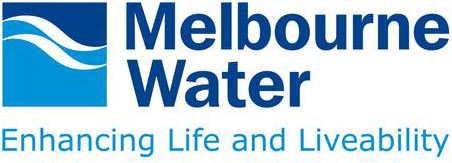news
Presentation highlights from 2014 Stormwater Victoria Conference
07 May 2014
Over 100 water professionals from a range of disciplines ventured to the outskirts of Ballarat to attend this year's 2014 Stormwater Victoria Conference. The Conference provided a fantastic opportunity to learn about the latest projects and innovations, build relationships and strengthen networks. Here are a few presentation we thought would be of interest:
ZAM WSUD
Simon Brink from Manningham City Council gave a very interesting presentation about one of the projects they have embarked on: developing and trialling a new concept for Zero Additional Maintenance Water Sensitive Urban Design (ZAM WSUD) assets. Working in partnership with Glen Eira City Council, the CRC for Water Sensitive Cities and Melbourne Water, Mannningham’s concept is simple: developing a design based on the principle of no additional maintenance requirements compared to a typical kerb and channel landscape.
Some of the innovative design concepts include:
- using mowable buffalo grass, so residents can mow a raingarden just like they mow their nature strip;
- installing channel groves to trap incoming sediment on the roadway, so it can be picked up by streetsweepers; and
- adding a protective layer of coarse sand on the surface of the filter media to help prevent the formation of a sediment layer.
The project is still at the early development and prototype stage, but promises to yield interesting results. Keep your eyes and ears peeled
Facilitating Collaboration Action
Dr Siwan Lovett gave an inspiring key note lecture on some of the best ways to interact and share our knowledge with others. Presenting the 5P framework (profit, proof, people, place and promise), she showed the audience how placing technical information within the broader context of people’s lives makes it meaningful, memorable, and more likely to attain the objectives they set out to achieve. Using a very entertaining mockumentary (The majestic plastic bag), she reminded us all of how powerful the use of a story can be for effective communication and collaboration.
Roof Water Harvesting – Tapping the urban catchment is a reality
Peter Wilson from Wannon Water provided an overview of a fantastic IWM project happening in Warrnambool: roof water from a whole new subdivision is collected and used in the city’s potable water supply system. The principle is to follow the growth of new subdivisions and ‘tap’ into new catchments areas as soon as they are constructed. This option supplies almost 100% of the subdivision’s potable water and provides a sustainable potable water source. A toolkit has also been developed to allow water supply planners to estimate costs and feasibility of this solution for their growing suburbs and towns. View Clearwater case study - Roof Water Harvesting Project.
A systems based whole-of-water-cycle (WWCM) approach for a regional city
Delivered by Tony Overman from Barwon Water and Nic Green from Spiire, this presentation provides an overview of the interesting approach taken to develop a holistic WWCM Plan for the city of Colac. It discusses the methodology used to identify and prioritise WWCM opportunities and the engagement approach used to translate these opportunities into meaningful visuals to stimulate discussion, build understanding and to inform municiple planning processes. What sets this presentation apart is the clear community aspirations which was a key driver for the project.
Tackling WSUD Implementation Together: A Collaborative Approach
Delivered by Russell Cadman from Brimbank Council and Katia Bratieres from Clearwater, this presentation details Clearwater’s new training approach and provides a case study on how this was applied at Brimbank City Council around wetlands maintenance. The presentation will explore the impact of the training on Council’s implementation of WSUD, the lessons learnt and the subsequent steps that Brimbank City Council has taken beyond the training to embed new thinking and processes for WSUD maintenance across the municipality.
A full list of Conference proceedings are available on the Stormwater Victoria Conference website.
